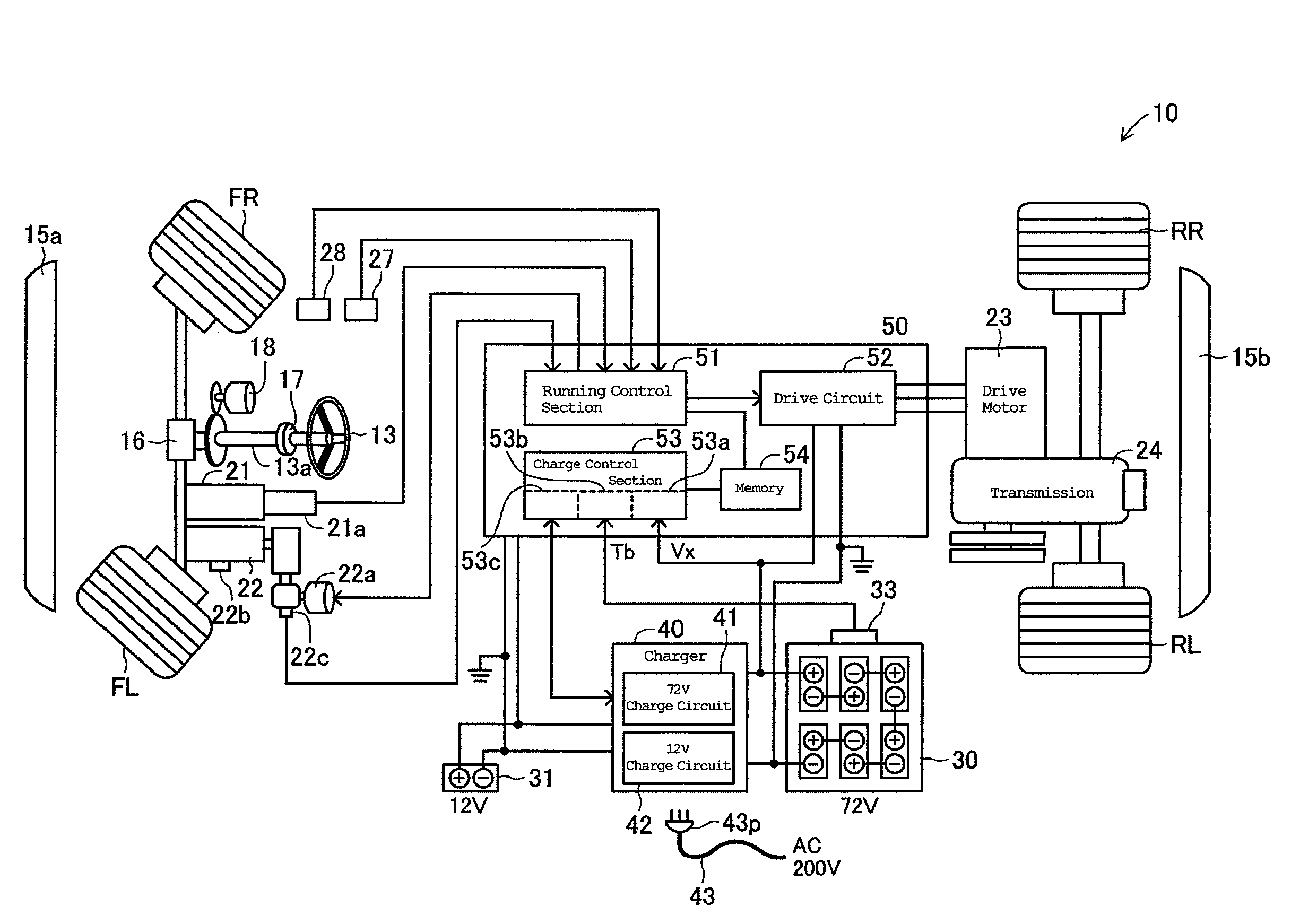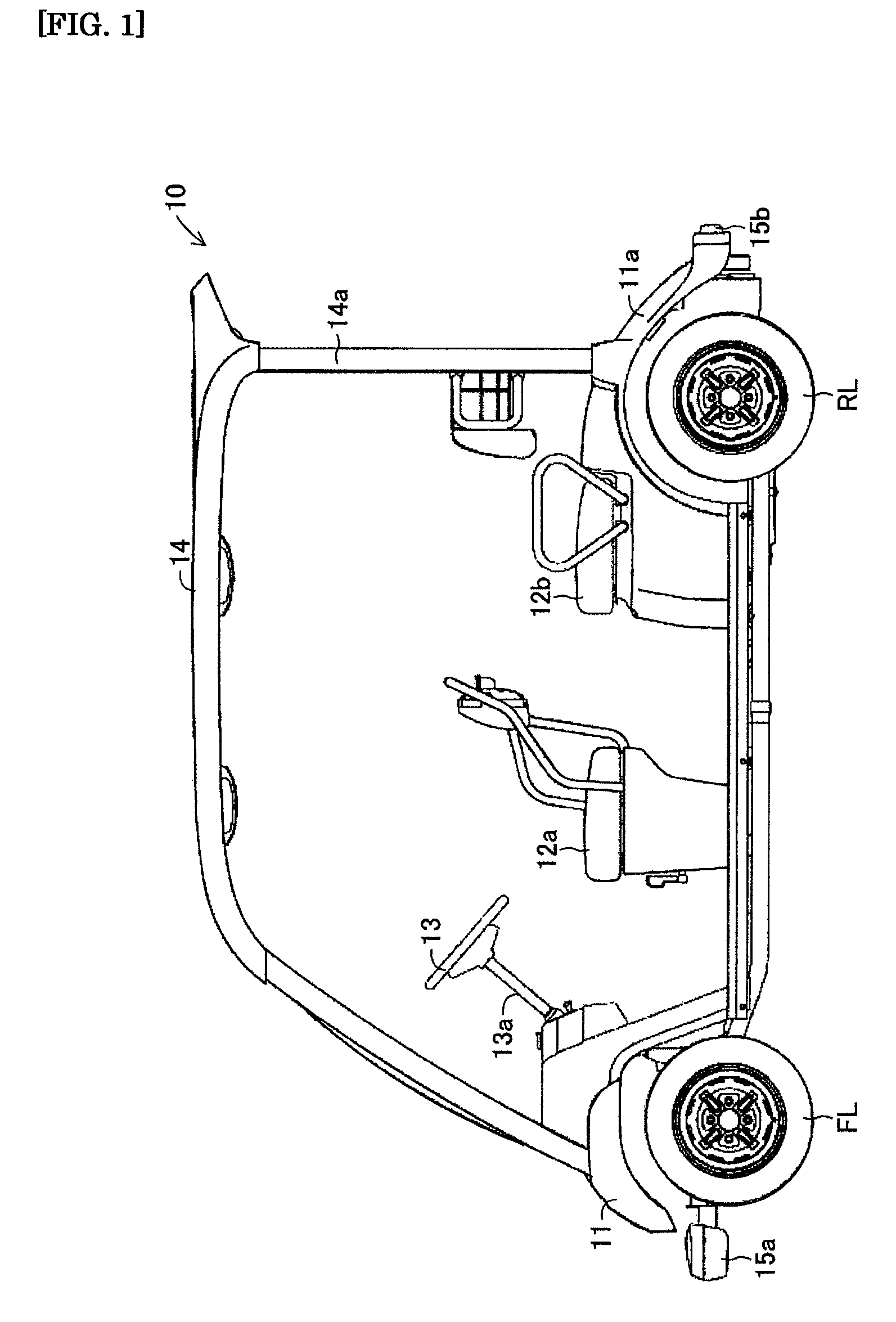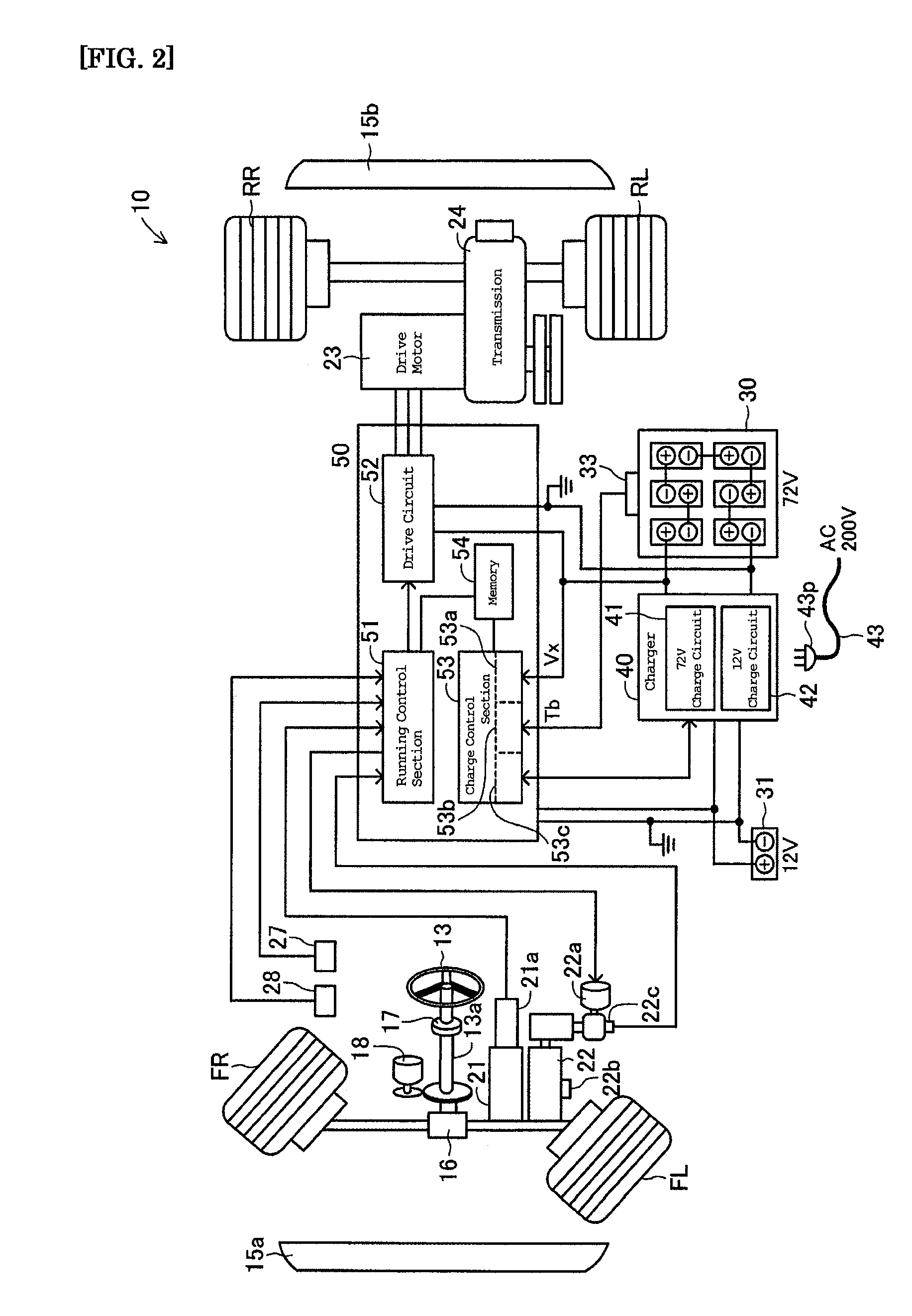Charge control device for executing a plurality of charge stages
a control device and charge control technology, applied in circuit monitoring/indication, instruments, transportation and packaging, etc., can solve the problem that the charge step cannot be changed to the next charge step
- Summary
- Abstract
- Description
- Claims
- Application Information
AI Technical Summary
Benefits of technology
Problems solved by technology
Method used
Image
Examples
first embodiment
[0057]Additionally, both of the battery voltage Vx and the elapsing time t1x are determined in the The process at the step S111, however, can be omitted and the change condition to the second stage can be set only by the determination of the battery voltage Vx at the step S112.
[0058]When, as thus described, it is determined that the change condition to the second stage has been achieved (S11: YES), the charge time t1x at the first stage is stored (S12) into the memory 54. Because the battery 30 is charged with each preset constant current at the respective charge stage, a product of this constant current value and the charge time t1x at the first stage corresponds to a charge electricity quantity charged into the drive battery 30. The product will be used in a calculating process for deciding a charge time at a fourth stage described later.
[0059]A signal from the temperature sensor 33 is read to detect the battery temperature Tb, which can be is stored in the memory 54 (S13). The b...
second embodiment
[0106]Next, a charge control process will be described. FIG. 9 is a flowchart showing a charge control routine stored in the memory 54 as a control program.
[0107]The charge control routine of this second embodiment is a routine in which the change conditions to the third stage executed at the steps S14-S15 of the charge control routine of the first embodiment are modified and the other processes remain the same. Accordingly, hereunder, only processes which are different from those in the first embodiment will be described.
[0108]In the charge control routine of the second embodiment, the charge time t1x and the battery temperature Tb are stored after the first stage has completed (S12, S13). Continuing, the upper time limit t2o of the second stage that is set in response to the battery temperature Tb is calculated (S41). In this calculation, a calculation table shown in FIG. 10 can be referenced. In the illustrated example, the upper time limit t2o is set to be 1.5 hours if the batt...
third embodiment
[0118]In the charge control routine of the third embodiment, the upper time limit t1o at the first stage is variable in response to the battery temperature Tb at the start of the charge of the first stage.
[0119]That is, at the start of this control routine, the signal from the temperature sensor 33 is read to detect the battery temperature Tb (S51), and the upper time limit t1o of the first stage calculated in response to the battery temperature Tb (S52). In this calculation, a calculation table shown in FIG. 13 can be referenced. In the illustrated example, the upper time limit t1o is set to be five hours if the battery temperature Tb is equal to or lower than 5° C., and to be three hours if it is equal to or higher than 15° C. The upper time limit t1o is also set, if the battery temperature Tb is in the range between 5° C. and 15° C., to be between five hours and three hours, and the higher the battery temperature Tb, the shorter the time.
[0120]Continuing, the charge process of th...
PUM
 Login to View More
Login to View More Abstract
Description
Claims
Application Information
 Login to View More
Login to View More - R&D
- Intellectual Property
- Life Sciences
- Materials
- Tech Scout
- Unparalleled Data Quality
- Higher Quality Content
- 60% Fewer Hallucinations
Browse by: Latest US Patents, China's latest patents, Technical Efficacy Thesaurus, Application Domain, Technology Topic, Popular Technical Reports.
© 2025 PatSnap. All rights reserved.Legal|Privacy policy|Modern Slavery Act Transparency Statement|Sitemap|About US| Contact US: help@patsnap.com



